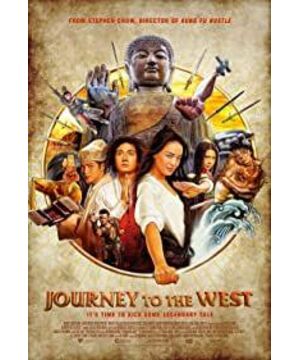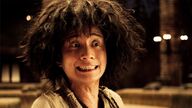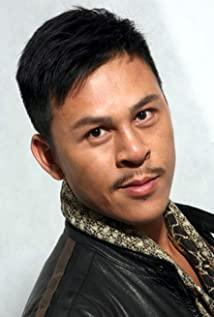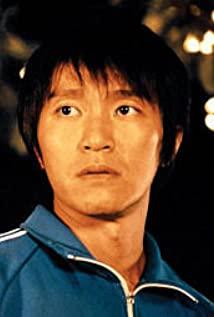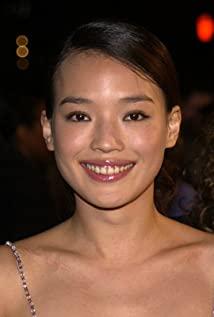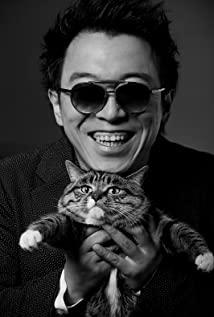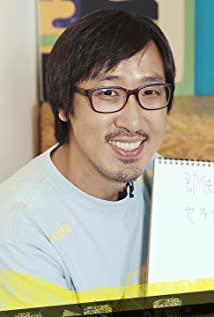descended, namely Sha Seng, Zhu Bajie, and Brother Sun Wukong, who were subdued by Tang Seng in reverse order, which is opposite to the order in the original work. Because the first comes first, although the big brother is arranged in the front of the novel, in order to leave the climax behind, let the big brother lead the line, this arrangement is also very good - the only drawback is the original plot of the water monster eating people, that water monster Another handsome guy with no beard, I thought it was Xiao Bailong who came out first. The so-called demon is the demon of the mind. The original name of Journey to the West is the ancient version of Journey to the West. In the original book, these three symbols symbolize the three kinds of demons in the human heart according to Buddhist thought. Buddhists call it the "three poisons", which are greed, hatred, and delusion. According to Buddhist interpretations, using a delusional mind to deal with all conditions that are favorable to one's emotions is greed, and the eight precepts; Stupid, sand monk is also. The Great Wisdom Theory says: "Three poisons are the root of all troubles". The Nirvana Sutra says: "The poison of poison, there are no three poisons." In the story of subduing demons, there are also three kinds of demons subdued. Sun Wukong's ruthlessness, Bajie's infatuation, and Sha Seng's resentment can all be classified as resentment when the mind is blocked. It may not be as clear as Buddhists in terms of classification, but it does not hinder the expression: the so-called demons are the inner demons.
Demon Slayer
Tang Seng is the demon conqueror in the story, called Chen Xuanzang. In fact, Xuanzang is the Dharma name of Tang Seng after he became a monk. is his "degree". Buddhist scriptures are divided into the three sutras, namely the sutra, the law, and the theory. Those who are proficient in one of them can be awarded the titles of sutra teacher, lawyer, and master. Although there are not many Sanzang Masters in history, there are quite a few. In the story of Journey to the West, Tang Seng is our heavy body and will to seek liberation, and what he relies on are the three disciples of greed, hatred, and delusion. Along the way, he just had to persevere. Suffering, pain, and heavy work are mainly for the disciples. Along the way, we polish our greed, hatred, and delusion. Ninety-nine-eighty-one trials are all for the sake of these three. The Tang monk in the film has extraordinary potential. Unlike other demon-slayers, he is dedicated to destroying demons. His ideal demon-slayer is to awaken the truth, goodness and beauty in the devil's heart. But he was always just a little bit short. It is because he is too superstitious about the truth, the good and the beautiful, and the part that cannot liberate people from greed, hatred, and delusion, the truth, the good and the beautiful are actually equally incapable. Just like the metaphor of Master holding a duck leg in his hand, no matter if you see the duck leg drooling or feel sick, the duck leg has not changed, but your heart is concerned and attached. Buddhists say: affliction is Bodhi. Many people can't understand this last layer, and always listen to the Buddhist language as if it were the truth. Anxiety is an annoyance, and a demon is an inner demon. It is because you have to cling to your troubles and be obstructed by demons. Love and dislike are both entangled. If you let go, you will be liberated and enlightened.
Buddha's Palm
Bajie and Sha Seng have all been subdued. How does the most powerful Wukong end? When I saw the Tathagata's palm falling from the sky again, I felt a little senseless. At that time, Tang Seng faced the death of his lover, read the scriptures of the Great Sun Tathagata, and showed the solemn Buddha image of enlightenment. I hope that Tang Seng can conquer Wukong in person. The death of the lover ended Tang Seng's last obsession with truth, goodness and beauty. The Great Sun Tathagata Sutra is a rearrangement of 300 nursery rhymes that symbolize truth, goodness and beauty in the film. Buddhists have the so-called three-body Buddha theory, the Tathagata Buddha is Sakyamuni Buddha is the Buddha's retribution body, and Vairocana Buddha is the Buddha's Dharma body, that is, the Great Sun Tathagata, symbolizing the root of the Buddha's Dharma - Pitta. Lujana is another name for the sun to remove all darkness. After the enlightenment, the Tang monk opened the Great Sun Tathagata Sutra, radiating light all over his body, which should be the correct understanding of the director. In the original book, Wukong was photographed by the Tathagata God's palm once. That was five hundred years ago, the Tathagata God's palm transformed into the Five Elements Mountain and pressed him under the mountain - no matter how capable he was, he couldn't escape the palm of the Tathagata Buddha. In fact, the name of the Buddha's palm, the Five Elements Mountain, shows that it is not the palm of the Tathagata, but the laws of the world. The cycle of the five elements symbolizes the iron law that no one in this world can break. I would rather believe that the big Buddha in the film is the manifestation of Tang Seng's power after his enlightenment, rather than the Tathagata Buddha coming to rescue the scene again. I would rather the Tathagata's palm is a beautiful tribute to the previous film, rather than the last trick that never fails.
Since Jin Hoop saw Shu Qi made a gold
bracelet so magical, I guessed it must be useful, but unfortunately it does not have the classic details of the hyperbolic gold hoop, so I dare not jump to conclusions. Later, I was relieved, since it can be big and small, one can be more, it is not an accident to become a golden hoop. In fact, the Tang monk wearing it on his hand is no different from wearing it on Wukong's head. Another symbol of Monkey King in the original work is "heart", the so-called "heart ape". And the confinement mantra is the "Heart Sutra". When Wukong returned from the study and asked the master to take off the golden hoop, the golden hoop was no longer there. Because the enlightened mind has been set free. In the film, the golden hoop is a gift for lovers and a restraint on the heart. Monk Tang wears it to achieve what the master said was a little bit of enlightenment.
between men and women
Tang Seng's master was a little nonsensical, and asked Tang Seng twice: What do you think about things between men and women. Could it be that he was talking about love? At the beginning, Tang Seng said that he wanted to pursue great love, not small love. He doesn't understand that big love is not about eliminating little love, but not indulging in little love. Resolutely resisting Xiao Ai shows that he still cares about this little love, and this is the little bit that he is inferior. In fact, no matter the big love or the small love, it is our expectation and love for ourselves. We look forward to affirming our own existence from love and love in return. In the world, except for life and death, everything is trivial. Life and death are problems. Between my life and death, my existence is not really self-evident. Big love or little love, the response of love gives us the joy of being. Buddhism does not talk about love, it talks about compassion. It is true great love, love that is for nothing, love that does not need a response. Just as Buddhism does not pursue long-term existence, but pursues Nirvana, that is liberation, that is, enlightenment. It is not existence, it is not nonexistence, it is beyond existence. Not big love, not small love, but beyond love.
Does the thing between a man and a woman refer to love? In fact, China does not have the concept of love. But there is the concept of lovesickness. The so-called "Qingfeng Mingyue bitter Acacia" means that when the wind is clear and the moon is bright, you miss the person who can share this situation with you. Maybe in a person's life, he will miss different people in different beautiful scenery. Would this be a sin? I thought, Acacia itself is beautiful. If you suffer from lovesickness, you are definitely out of the middle way. The world is beautiful, why not miss it. Because the love of a lifetime is often "outside the white clouds".
Beauty and Fear
Some people say that this film has the atmosphere of a horror movie. Indeed, the shape of the three demons is very scary, and the beginnings and transitions of some plots are also very scary. But I can accept it. I also like San Mo's usual style, the three actors appearing in real life, and there is no makeup on the face. In my heart, in fact, the infatuated Bajie should always be a handsome man, the gentle temperament of Sha Seng is also good, and Huang Bo's indulgent and unruly Wukong is very suitable for me. In a word, greed, hatred and delusion can be the truth, the good and the beautiful. Everything is created by the mind. Because of this, I deeply agree with how scary and dreary they are as demons, just as I agree with how dashing and handsome they are as human beings. Otherwise, the transition from hell to heaven cannot be seen, only in an instant.
View more about Journey to the West reviews


